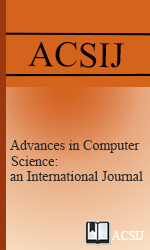Select the most relevant input parameters using WEKA for models forecast Solar radiation based on Artificial Neural Networks
Abstract
Forecasting solar radiation is important for many applications in research related to renewable energy. Solar radiation is forecasted by solar radiation forecast models including the traditional models and artificial neural network (ANN) based model. There are geographical and meteorological variables that affect the solar radiation, thus identifying the appropriate variables to forecast solar radiation correctly is an important issue in the research area. Accordingly Waikato Environment for Knowledge Analysis (WEKA) Software was used in 11 points in Guilan based on different weather conditions to find the most effective input parameters to forecast solar radiation in different ANN models. Input parameters include latitude, longitude, maximum wind speed, average temperatures in each month, the average maximum air temperature, average minimum air temperature, sunshine, monthly rainfall, maximum rainfall in a day for different cities of Gilan. In order to check the reliability of the forecasts by known parameters, three ANN models have developed (ANN-1, ANN-2 and ANN-3). The maximum MAPE for ANN-1, ANN-2 and ANN-3 equals 22.15%, 20.29% and 22.14%, respectively indicating 1.86% improvement in the accuracy in the prediction of ANN-2.
Keywords
Full Text:
PDFReferences
Azeez MAA. Artificial neural network estimation of global solar radiation using meteorological parameters in Gusau, Nigeria. Arch Appl Sci Res 2011;3 (2):586–95.
Linares-Rodriguez A, Ruiz-Arias JA, Pozo-Vazquez D, Tovar-Pescador J. An artificial neural network ensemble model for estimating global solar radiation from Meteosat satellite images. Energy 2013;61:636–45.
Hall M, Frank E, Holmes G, Pfahringer B, Reutemann P, Witten IH. The WEKA Data Mining Software: An Update; SIGKDD Explorations 2009; 11(1). [accessed 02.02.2013] 〈http://dx.doi.org/http://www.cs.waikato.ac.nz/~eibe/ pubs/weka_update.pdf〉.
Witten IH, Frank E, Hall MA. Data mining: practical machine learning tools and techniques. A Book of Morgan Kaufmann Publishers. 3rd ed.2011.
Chow SKH, Lee EWM, Li DHW. Short-term prediction of photovoltaic energy generation by intelligent approach. Energy Build 2012;55:660–7.
Frederick M. Neuroshell 2 Manual, Ward Systems Group Inc., 1996.
Bakirci K. Models of solar radiation with hours of bright sunshine: a review. Renew Sustain Energy Rev 2009;13:2580–8.
Khatib T, Mohamed A, Sopian K. A review of solar energy modeling techni-ques. Renew Sustain Energy Rev 2012;16:2864–9.
Rehman S, Mohandes M. Estimation of diffuse fraction of global solar radiation using artificial neural networks. Energy Sources, Part A 2009;31: 974–84.
 Advances in Computer Science : an International Journal
Advances in Computer Science : an International Journal







